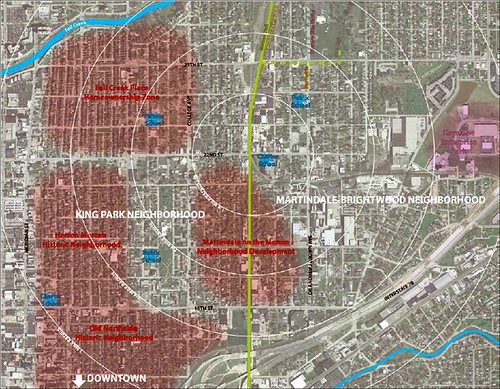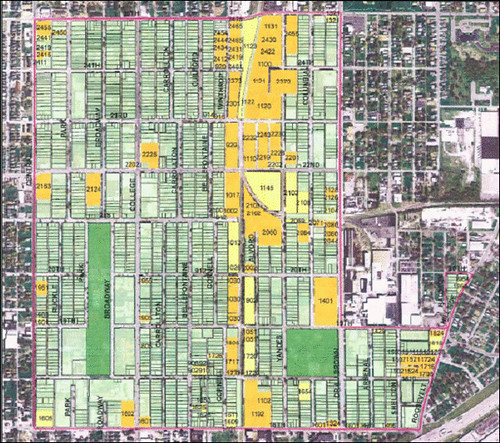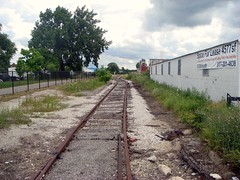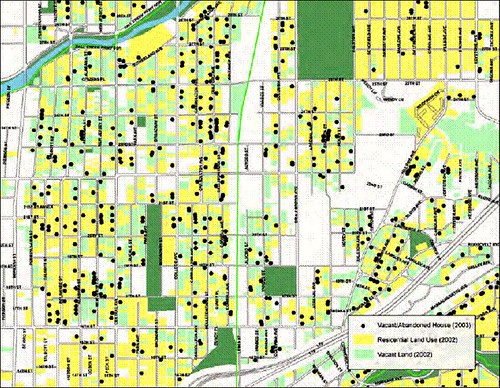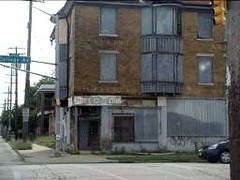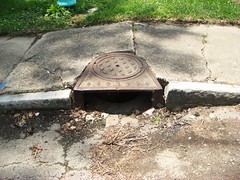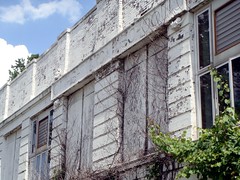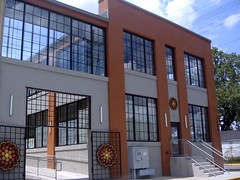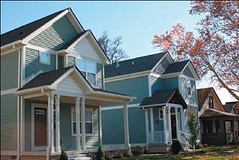A close-up look at a revitalization district (Indianapolis, part 2: the challenges)

Posted November 19, 2009 at 1:45PM
Earlier this month I began a series of posts about Indianapolis's Smart Growth Redevelopment District, which I have had the honor of advising. The area in question is a distressed part of the city, two miles northeast of downtown, divided by an abandoned railroad corridor and beset with brownfields and vacant properties. It has a resilient population, though, along with some nice streets, historic buildings and the potential for a new light rail line that would run through the old corridor. I was part of a team assembled by the American Institute of Architects to examine the district, meet with residents, and offer recommendations.
What we saw in our visit
Although the district has declined significantly, it retains good "bones" for restoration. These include a good urban street grid that can promote walkability, and some relatively stable residential areas (see photo above). It also has a terrific location close to the region's core. There is ample park space, although it is not particularly well-developed for the best use by the neighborhood. And our meetings there left no doubt that the level of community awareness and engagement in the neighborhood appears strong.
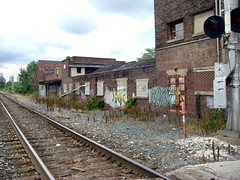 The old rail corridor - now known as the Monon Trail - is the district's most striking land use feature (it is the green line running north-south on the satellite photo, above), and it is both a problem and an opportunity. Historically, it has divided the neighborhood, with King Park and other areas to the west, Martindale-Brightwood to the east. Industrial sites lining the corridor from the days when it was a functioning railroad are now (mostly) very badly deteriorated, further isolating residential areas on either side, creating major eyesores, and presenting risks from toxic contamination.
The old rail corridor - now known as the Monon Trail - is the district's most striking land use feature (it is the green line running north-south on the satellite photo, above), and it is both a problem and an opportunity. Historically, it has divided the neighborhood, with King Park and other areas to the west, Martindale-Brightwood to the east. Industrial sites lining the corridor from the days when it was a functioning railroad are now (mostly) very badly deteriorated, further isolating residential areas on either side, creating major eyesores, and presenting risks from toxic contamination.
For example, below is a map of brownfields and suspected brownfields in the neighborhood, depicted in yellow and amber; notice how they congregate along the Monon corridor:
The trail through the corridor, which runs for many miles through the metropolitan region, is now a popular recreational facility for bicyclists and strollers, but from my observation it appears to be used primarily by people passing through the district, not so much by local residents. If the portion of the corridor in the redevelopment district is cleaned up and its old industrial sites used for new moderate-density, mixed-use development, however, it could become a strong asset, especially if the light rail line is built alongside the trail.
But the dominant impression to an outside observer is that the neighborhood has far too many vacant and abandoned properties, both commercial and residential. In the map below, parcels shown in light green are vacant. Parcels marked with a dot have standing but abandoned houses:
The district was never high-density and shouldn't be considered a candidate for downtown-type development, but it once had a decent critical mass of people and functioning buildings sufficient to support good transit service, an array of places of worship, and neighborhood-serving retail. That is no longer the case; many sprawling suburban neighborhoods probably have higher population densities than does the redevelopment district, and its lack of density is hurting its chances for recovery. Currently the district has only one bank branch, and no adequate supermarket or pharmacy. It certainly lacks a walkable center.
The area also has deteriorating infrastructure, especially visible in broken and interrupted sidewalks. And there is visible evidence of sewer infrastructure that has been overloaded with runoff, leading to combined sewer overflows.
On the positive side, there is an emerging mixed-use redevelopment at 22nd Street and the Monon, featuring the Project School (see photo below) and a nascent arts/design center, both in an old automobile factory. Martindale on the Monon, a redevelopment project, has added new and rehabbed homes in a portion of the district. A number of local community development corporations are adding value with scattered building throughout the area. The district also has some brick streets, which could definitely add value to thoughtful redevelopment.
I'm not quite sure what to say about the Keystone Industrial Park, a mid-1990s effort to bring new jobs to the city that is still being filled out. It is an asset of sorts, potentially a major source of jobs for residents of the district. But it is a suburban-style property (satellite image below), oriented to automobiles and a freeway in a zone that is disconnected and completely isolated from the community. 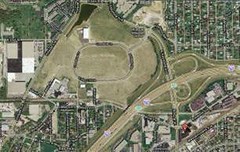 It is a part of the neighborhood in name only, really something that just happens to be there rather than part of or enhancing the district in any visible way.
It is a part of the neighborhood in name only, really something that just happens to be there rather than part of or enhancing the district in any visible way.
What we heard
One of the great hopes for the district is that, as noted, its residents are aware and engaged. They care about their community and they are sophisticated about its history and potential; many are lifelong residents. They are also justifiably skeptical, given that the district has been the subject of previous planning efforts, none of which have lived up to their expectations. (One participant in the first community meeting during our visit put it eloquently: "Don't tell us [again] what we need to do: help us do it.") They have seen investment and attention drained from their community and reallocated to the suburbs.
The statement that resonated the strongest in the breakout section on land use and neighborhood design was "I want the neighborhood to be more like it was" before it was disinvested. 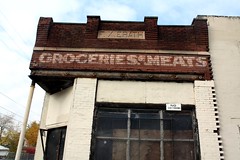 I believe that new activity that focuses first on restoration (rather than "change") will be the most warmly received and have the greatest opportunity for rebuilding trust.
I believe that new activity that focuses first on restoration (rather than "change") will be the most warmly received and have the greatest opportunity for rebuilding trust.
Another strong theme from the larger community meeting was that infrastructure spending and management in Indianapolis in recent years had primarily benefited suburban residents, facilitating the flow of commuters back and forth through the district rather than adding value to the district itself. One small but perhaps telling example was that the ability to make left turns from some streets was reportedly "taken away" in order to facilitate through traffic.
If Indianapolis is like many other cities, the concern that the district has been considered conduit as much as or rather than community may be well founded. Unfortunately, this does not help the community's perception of what a light rail line might bring to the district ("it will benefit 'them,' not 'us'"), 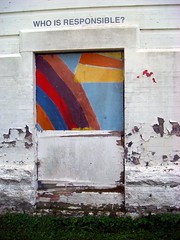 but ultimately most residents do seem to understand that their potential for recovery will be enhanced considerably if the line is built, with one or more stops within the district.
but ultimately most residents do seem to understand that their potential for recovery will be enhanced considerably if the line is built, with one or more stops within the district.
The residents expressed very real concern about public safety, with "people from Gary and South Chicago selling drugs here." We "need to feel safe where we live." There is also concern that transit service is poor, and that the community is beset with public health hazards that may be contributing to disease such as asthma and breast cancer.
These are formidable inner-city challenges that will require investment, time and trust to overcome. But, by the time our team left (after three-plus very full and grueling days), the community was feeling encouraged and appreciative. In the next installment I will tell you why.


